Towards $1 Trillion Manufacturing Economy
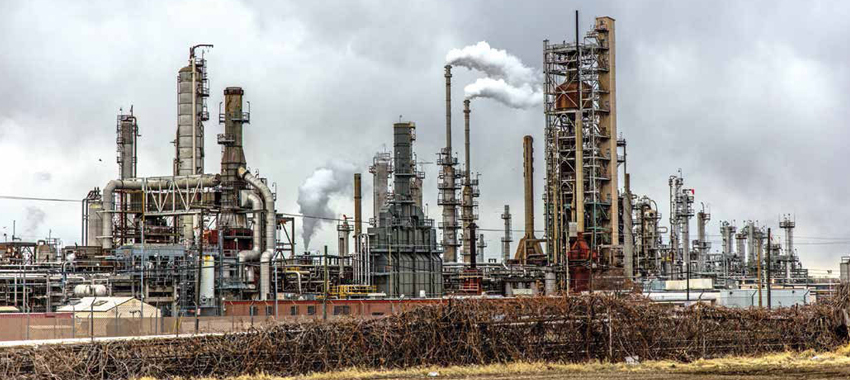
As India is one of the fastest growing economies in the world, various parameters are needed to be considered in order to become the fastest-growing economy in the world. At the recently held CII conference on ‘Future of Manufacturing’, at Taj President, Mumbai, industry experts discussed what needs to be done in order to attract investments in India, how can India capture the China’s export market considering that China’s exports have dropped significantly and how to achieve the target of being a $1 trillion economy by 2025. The panellist for the riveting session were, K Nandakumar, Chairman and MD, Chemtrols Industries Ltd; Member CII National Council and Rahul Jain, Senior Partner & MD, BCG India. Corporate Citizen brings you the excerpts...
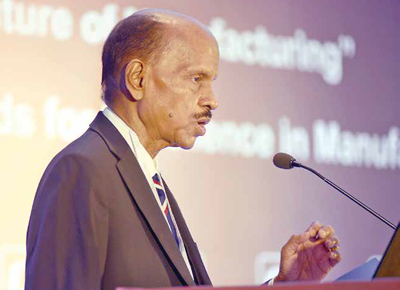
K Nandakumar: India continues to be the fastest-growing economy globally. India’s manufacturing has the potential to emerge as one of the highest growth sectors in the world.The Indian Government in line with its Make in India movement has set an ambitious target of increasing the contribution of manufacturing output to 25% of the Gross Domestic Product (GDP) by 2025 which is a nine percent increase from the present level of 16%. In order to achieve the target of 25% GDP over a period of say around six years, the average year-on-year growth of 12%-13% will be required and it is a real challenge to make it happen. And that is the matter we need to be deliberate on how we need to achieve it.
Roadmap for growth
As India readies itself to move towards $1 trillion manufacturing economy, the government has committed to foster growth of manufacturing sector for setting its eye on achieving the target of $1 trillion economy by 2025. This commitment has translated into the vision of manufacturing and holds the potential to truly transform India’s manufacturing landscape. With its pocket on the select high impact sectors such as metals, mining, chemicals, food processing, automobiles, pharmaceuticals, capital goods, textiles and electronics and the horizontal pillars like ease of doing business, cost of doing business, technology, R&D and skilling, the roadmap will have the potential to guide for an incremental 20%-25% growth and increasing India’s manufacturing GDP by 2025.
As we are looking forward to a set of comprehensive reforms by diversifying a manufacturing economy and taking up its share in national GDP, we are aiming at preparing an actionable manufacturing roadmap along with a number of sector specific amendments intended to do it. India aims to grow its manufacturing gross value by about three times to reach the target of $1 trillion by 2025. Talking about different sectors in manufacturing, food processing needs additional 5%-6% additional Compound Annual Growth Rate (CAGR) aimed at the domestic production required from the sector to achieve the set goal. Mining and metals require 5% CAGR from the present level to reach the target by 2025. Pharmaceuticals has seven per cent CAGR in the products exhibited over the last four years and that should certainly take it at the level of $1 trillion. For textiles sector, current growth rate needs to be sustained to achieve $1 trillion GDA; additional 3%-4% of CAGR aimed at domestic production required for the sector to increase it to $1 trillion. Capital goods sector needs about 5%-6% in CAGR aimed at domestic production and the capital sector is one area where the skill required is maximum and the capital sector required being the horizontal pillar, if it cannot deliver, it can-not achieve the target of $1 trillion manufacturing growth. Chemical industry production has witnessed a 5% CAGR in the past five years, an additional 5% of CAGR is needed through the domestic output to reach the target of $1 trillion economy by 2025.
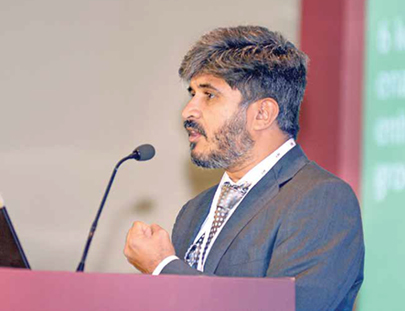
Collaboration with CII
CII with support from DPIIT (Department for Promotion of Industry and Internal Trade) has constituted a mega policy forum to achieve a national roadmap for achieving $1 trillion economy. The forum has been designed as a forecast and action oriented participatory workshop cum policy dialogue in the six key manufacturing sectors along with the focus on four horizontal pillars of manufacturing. The focus sectors identified for preparing the road map include metals, mining, chemicals, food processing, automobiles, electronics, pharmaceuticals, capital goods and textiles. The critical horizontal pillars are manufacturing, infrastructure and logistics, cost of doing business, the cost for labour, power, raw material, policy support, benchmarking standards, customs and related logistics and supply chain, technology and R&D and of course job creating and skilling. Job creation and skilling will certainly have the bearing on what technology is available. The objective is to create an effective annual platform to give dimension to some of the key economic and policy dialogues of this global relevance. The forum has already met in 2018 and deliberations included issues and challenges, restricting growth in manufacturing, especially in different manufacturing sectors. A new industrial policy is also in the handbill, which DPIIT is taking care of the across the sectors for consultations. Also, the roadmap including the sectoral roadmap is designed to consistently maintain the progress on the target to be $1 trillion economy. Industry specific leadership sessions deliberated around the creation of new market opportunities, the rich pipeline of innovations in materials and processes and promising fresh demands and productivity against industries and geographies. If one needs to do business, one needs to be competitive and if one does not have continuous innovation embedded in manufacturing processes, one cannot survive in the competitive world. So, continuous innovation has to be imbibed into the manufacturing process. That is one of the key areas which reform is looking at.
The next step is, as an outcome of the national forum the detailed actionable roadmap will focus on identifying the sectors to achieve this $1 trillion target by 2025. Along with outlining the specific guidelines and stakeholder responsibilities, the roadmap will make efforts to track the progress on the implementation and that is a big challenge in a country like India. India has a massive workforce and emerging supply base and access to several natural resources needed in production. Once the roadmap is ready, India could create 60 million to 90 million new manufacturing jobs and attract investment as a nation. To capture the available opportunity, the manufacturing sector has to improve its efficiency dramatically. If these core advantages are captured, India is well-poised to become the world’s fifth largest manufacturing country by 2020.
As India readies itself to move towards $1 trillion manufacturing economy, the government has committed to foster growth of manufacturing sector for setting its eye on achieving the target to be $1 trillion economy by 2025
K NANDAKUMAR

Rahul Jain: I also would like to share what the changing global scenario is, it is important to be aware of how the world is evolving and how we fit in the picture and then we will get a bit more specific on what the agenda has to be if we have to meet the $1 trillion goal.
Present status of economy
Currently, the Indian manufacturing economy has been growing at seven percent, there are many measures to measure it, we measure it as GVA (Gross Value Addition) domestically created, it is net of all imports, exports, etc. The total size of the manufacturing sector is $367 million in FY17 and the eight sectors that Mr Nandakumar mentioned are the key focus sectors which account for around 70% of the same.
The textile sector is the largest at $45 billion and growing at roughly 10%; auto components and the automotive sector at $41 billion and growing at 11%-12%. Metals, which is at $40 billion, is degrowing due to a variety of factors; capital goods is at $37 million growing at 5%; pharmaceuticals is at $31 billion and growing at 20 %; food processing is at $29 billion and growing at 4%; chemicals is at $28 billion growing at 7%; electronics and other small sectors but with a lot of hidden potential at $9 million.
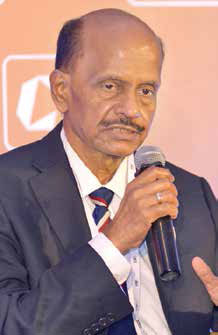
Attracting foreign investments
When the vision of $1 trillion was laid out for over the next 6-7 years, it meant a 12% CAGR is essential, that being said, where is the addition-al 4%-5% going to come from? And to achieve that significant investments will be needed. I think two questions will come up, where will this come from? And who is going to invest? To me, the latter is equally important because as we see, most of the industrial conglomerates are shying away from large capital investments in the manufacturing space. There are several reasons for diminishing economic investments, such as relative attractiveness of services, lack of the adequate domestic scale and hence, dependence on trade policy and protection support makes it one of the key reasons why people are not really investing in a heavy way.
When we think of where this 4%-5% could come from, we also should consider that the domestic economy will grow at a certain pace, you cannot catapult that to a different level where it needs to come from is, a group of sectors which can garner a larger sale of exports than what we are doing today. There are some sectors where we have significant exports, either on the speciality side or higher value-added product side and there the domestic capabilities should be enhanced to be able to substitute imports, whether it is in chemicals or capital goods or food processing. And there are some new-age sectors where future growth can be catapulted like defence or jewellery and so on. That is a broad context, we need to think of where will the growth come from, we need to think, who is going to invest, why will that group invest.
Today, we are seeing inadequate investments flow in other than replacement capex or replenishment capex. That’s what I think is the Indian context. If I can switch gears to where is the global value chain today, we are seeing a new wave, I think if you see how the world is evolved over the last few decades, from the steamed power vessels era to shipping containers to internet, today, the biggest change in digital technology is Industry 4.0, and in this context what we are seeing is there are three major externalities shape the world’s manufacturing base. Firstly, you are seeing the growth of economic nationalism, if you track all the trade measures and if you deaverage them into discriminatory liberalising, you will find that we are seeing a higher spurt in discriminatory measures as against liberalising measures. Which means we are seeing the reverse of globalisation, what you are seeing between the USA and China, is a complete reshaping of the trade blocks. We all know how they are thinking of import export and the trade balance between them and that is fundamentally shaping where the manufacturing occurs. Whether it is the rise of manufacturing in the USA or it is the diminishing imports from China. Secondly, there is a significant increase in the emergence of industry 4.0. We are seeing the number of industrial robots are likely to increase from one million to eight million by 2030. Traditionally, labour-intensive factories are seeing a significant change in terms of the implementation of Industry 4.0. In that context, two big opportunities are there for India, if you measure exports as a percentage of GDP in India, it is 23% and you are seeing it actually diminish from 2014-2017 from 23 per cent to 19 per cent. On the other hand, China’s exports are diminishing from 24 per cent to 20 per cent and given the large nature of exports from China, it opens up a big opportunity base for the rest of the world. Today, what we are finding is countries like Vietnam and other fareast countries who face lesser trade sanctions and who are trying to be more quality conscious are able to actually drive and capture the share. We know that China’s exports are going to come down, that is the inevitable reality of today’s trade balance in the world. We have a massive opportunity in front of us to capture a large share of that.
In addition, you could see a lot of India-Asia trade happen in the future where the focus historically has been somewhat lower and you see 2.5x rise in intra-Asia trade as against the rest of the world. That is an additional opportunity that we need to think of.
To sum up in three key points: First, if you have to get to $1 trillion economy on the manufacturing side, we need to think of which sectors will drive that because traditionally speaking, we have been at 6%-7% but we need 12%-13%. Second, we need to ask why people are going to invest, what is the economic rationale that we can provide for them. Third, the global context makes it quite attractive right now, given China’s diminishing exports and we as a nation have a great opportunity ahead in capturing that.
As Chinese exports go down there is a big opportunity we need to capture, we need a greater alignment between different ministries to increase exports of textiles and food processing
- Rahul jain
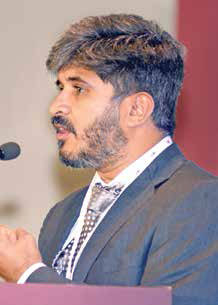
Work in sync
So what do we need to do? There are six key levers, which we, as an economy need to work towards and none of them can be achieved fully by the government or by industry. This requires an effort on both the groups. I think if you ask the industry, they say, many a time, policies are not favourable, we don’t have enough skill, inadequate technology is coming, not enough focus is there on skill-building or not enough value addition is happening and so on. We need adequate capability building by industry to take our focus from cost to quality to get skill levels up, innovation levels up and to drive competitiveness up. And at the same time, the government needs to provide the right enabling environment in terms of ease of doing business, in terms of some common infrastructure costs, the cost of doing business and even if need be some trade protection till the domestic skill raps up. That is the context, and in that the six measures we believe are the most critical.
Considering the parameters
Talking about the parameters, the first one is the ease of doing business, we have made significant progress in this but we are nowhere where we need to be. Secondly, focus on reducing the cost of doing business. We are lagging quite behind as compared to many countries of the world, whether it is logistics cost or power cost. Thirdly, adoption of technology and Industry 4.0, this is quite critical. Fourthly, upscaling, we need to get upscaling done of our labour in a significant way; there is a lot of focus by government and industries to take a lead in that. Fifth, the policy environment it needs to be stable, needs to be selectively protective but only till the time, you get, your own base substantially up. I strongly believe that in the long run no protection ever supports and works but often works in the short run, as we have seen from China’s experience till the time you get the necessary skill and the necessary investment ability, you need to provide the right environment to pump that up. And lastly, encourage investment, without that we won’t get anywhere.
Today, we see much of the larger industrial groups shy away from large belts of manufacturing which is really not desirable given where the market is heading and if we need to really revive our $1 trillion economy and if we want to be known as a manufacturing base, I think these measures are quite critical. Actually, ever since the whole Make in India dialogue has started, we have not made as much progress as we would have liked in the last five years. If you ask people in private quarters, sometimes you hear the view that we have missed the bus. We will never be a manufacturing sector, we will never be a manufacturing economy, we should continue to focus on services and consumer based economy or agricultural economy which is our natural strength.
India vs the rest of the world
If you look at the ease of doing business, we have moved up from 132 rank in 2013 to 77 rank in 2019. This is by no means is insignificant, it is quite significant, and it is driven by factors, like construction permits, the cost of trade, the cost of getting electricity and so on. We have made progress, the question is, is this enough? And if we measure ourselves on starting a business, we rank 137 in the world; for registering a property, we rank 166 in the world; for trading across borders, we rank 80 in the world. Some of these factors make it difficult for us to be the prime centre of investment.
f you look at the cost of doing business, we continue to rank at 61 out of 100, while South Korea is ranked at 87 out of 100 that is reverse of rank. Our rank is 58, and we get 61 points out of 100, as per the World Economic Forum. This includes various elements from power to labour to logistics to taxes, to trade, to capital, to land acquisition. Some of these are factors which are very difficult to address such as the capital cost or the taxes, which drives government budgets but many other factors like logistics, land acquisition and power require significant prog-ress and to say that efforts have not been made, would be incorrect.
I think the department of logistics is created to coordinate across multiple sets of ministries to drive progress in them. But I think, there is still a way to go. If I take some data on power, while our costs have come down in the recent past, in terms of cents/kilowatt hour, our nature of economy is such that we are a very power centric manufacturing economy and if you measure power consumption per unit of manufacturing output, you will find India amongst the highest. If you look at the quality of logistics infrastructure, it is really poor, we are at 2.9, whereas the western world and China are substantially ahead of us. Our lending rates are quite high. If you look at the cost of registering a property, it is amongst the highest in the world. The time taken to register a property is amongst the highest in the world.
Role of the government
With the help of the government, we need dedicated funds to provide soft loans, wherever in the certain sectors they need to be. We need to think of policy changes and a single window for land and property related issues. If you look at manufacturing 4.0, it is equally vital for industry and driving our capabilities in them. We need to invest in technology and R&D, if you look at where we rank on technology R&D adoption, we are 117 in the world and we stand on 28 on a scale of 100.
We tend to look at external issues as against looking inside, are we really driving value addition or is the focus much more on creating products with limited technology, both at the product level and at the process level and focus on R&D on both product level and process level is quite critical. We need to create the adoption of Industry 4.0, we need a proper dialogue between industry, government and academia to develop these 4.0 centres of excellence. We need a strong dialogue on how to develop 4.0 experience. We need very strong preferential procurement of government by MSMEs for MSMEs investing in R&D. Today, there is no differentiation between a company that invests and a company that does not. We also need to look at what kind of tax breaks we need to do, as the government for companies which invest sufficiently.
Talking about upscaling, if you look at the rank of our skilled labour workforce, we are 104. While there is a large central impetus on that there is a lot that still needs to happen. Whether it is a common minimum programme of standard accreditation of key skills or it is an early engagement of jobs and skills to showcase or it is the linkage of curriculum formulation or push required by companies to upscale existing employees, and maintaining a strong skill inventory.
I think we need to think of multiple measures here, we need to think of India as a larger eco-system. We need to create a stronger collaboration with countries around us, Bangladesh, Nepal, and Sri Lanka. We need to think of government to government policies, to access emerging markets.
As Chinese exports go down there is a big opportunity we need to capture, we need a greater alignment between different ministries to increase exports of textiles and food processing. Here, oftentimes we find the action is locked between industry and we need a lot of focus on benefitting from free-trade agreement.